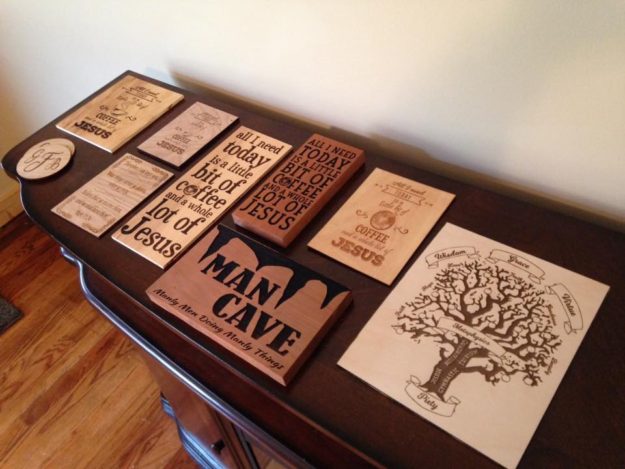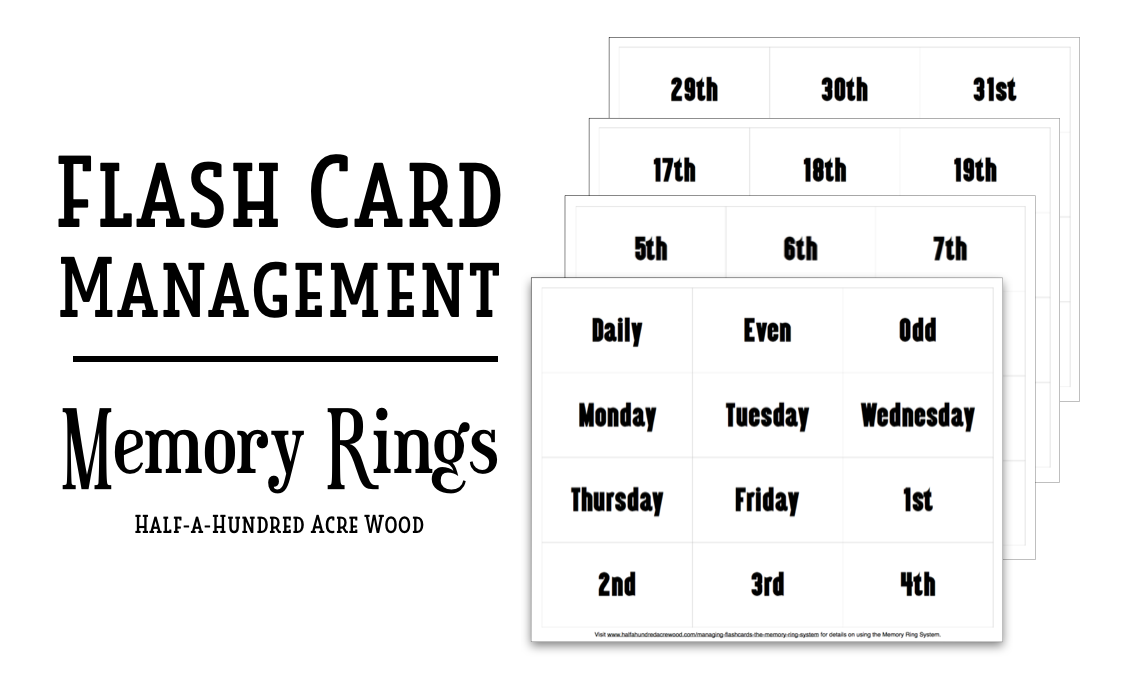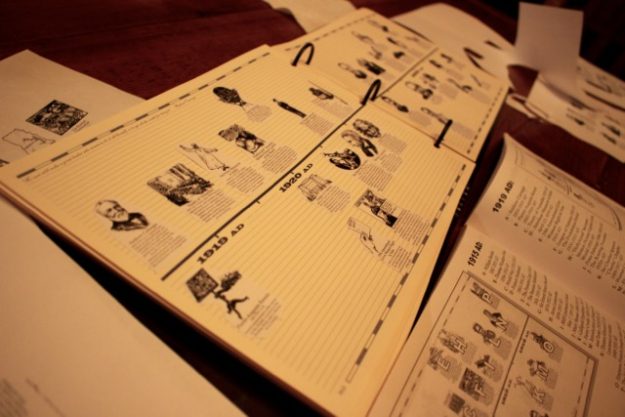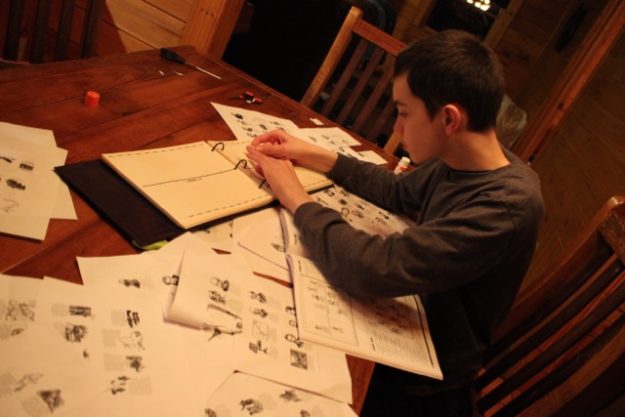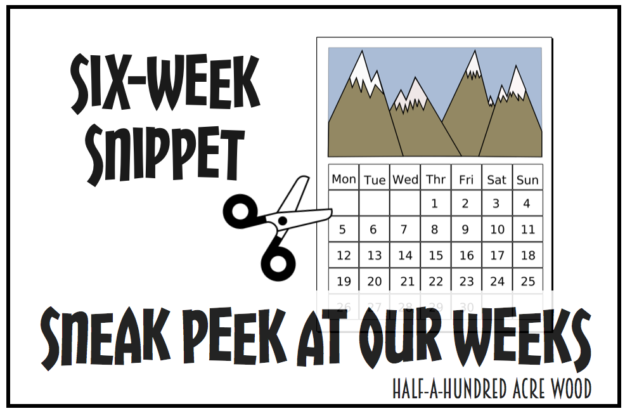
I’ve been intending to provide a weekly sneak-peek-at-our-week for about seven weeks now, but… our weeks keep running together! Instead, I’ll provide a six-week snippet of how things have been going in our neck of the woods. Most of our efforts have surrounded the launching of a new family side-business venture: Half-a-Hundred Acre Woodshop. I’m happy to say it’s finally ready! Albeit a bit small, Half-a-Hundred Acre Wood Shop is now officially open! {We now sell things through our store here on this website!}
What’s up with Middle School
January marked a major milestone for us: Science fair! Oh, how naive I was to think this would be an enjoyable experience! Surely it’s a fantastic experience for other families, but our only favorite part about this science fair project was when it was over. I think the key to making science fair actually a good experience is to choose something your student is passionate about. We ended up growing 20 samples of bacteria to investigate the effectiveness of chemical and botanical cleaners. We obtained interesting results, but those results were not so interesting to him. (What’s worse is that four other students across middle Tennessee ended up doing the same type of research project.)
Despite the despair, you’ll notice we had some good moments, such as Stephen’s victorious smile as he finished pasting the final piece onto his science fair board.
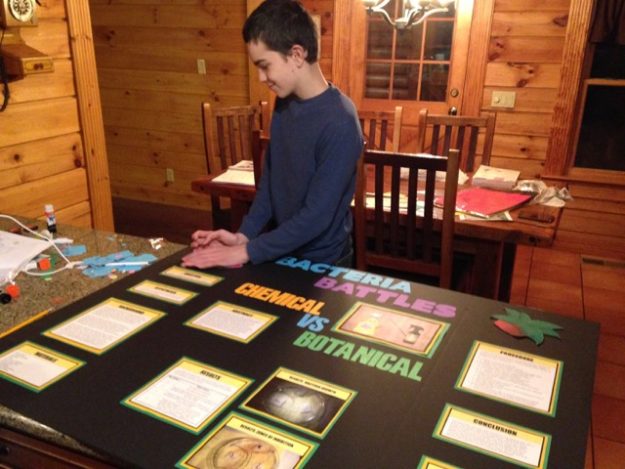
Of course, that wasn’t the final part of the project because we had to go back through his research journal and organize it. (Yikes!) In the end, using the Bullet-Journal method of organization saved the day, and he ended up with high marks from the science fair judges on his research notes. (This was actually a humongous achievement if you consider our not-so-organized son’s way of writing down notes haphazardly on whatever random piece of paper he can find in the most atrocious handwriting possible.)
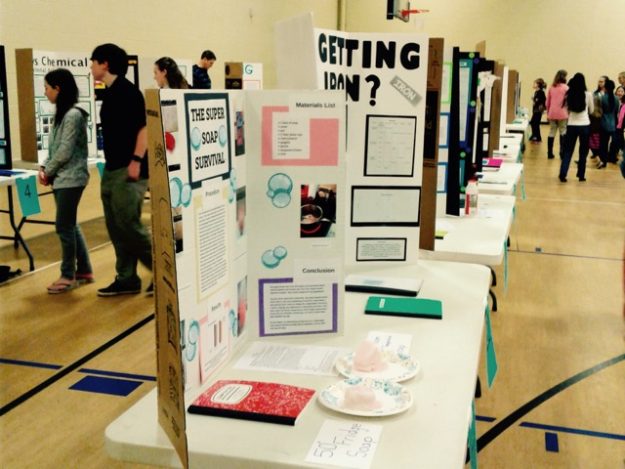

Whelp, now Mock Trial doesn’t seem quite so intimidating for us. #thatwasNOTeasy
Challenge (Middle and High School) Planner Pages. Speaking of organization (or lack thereof), I finally pulled together some Challenge Planner Pages that better fit our way of thinking. You can check ’em out here.
 We also discovered that once we hit Latin verbs, vocabulary practice was falling by the wayside. Stephen came home from community telling me that he needed to do a better job of memorizing his vocabulary. (I’m so thankful for the accountability of his homeschool group, which convinces him way better than Mom can that these things are worth doing!) Although he’s been writing all of his vocabulary index cards each week, he was keeping them organized in a certain way in a file box. Of course, I didn’t want to disturb them from their nice, neat resting place because he can easily find what he needs for reference. So… instead of using those, I had this great idea… download a humongous (alphabetized) list of Henle Latin 1 vocabulary from Quizlet. There are about 500 vocab words in Henle Latin 1, which looks sort of like this:
We also discovered that once we hit Latin verbs, vocabulary practice was falling by the wayside. Stephen came home from community telling me that he needed to do a better job of memorizing his vocabulary. (I’m so thankful for the accountability of his homeschool group, which convinces him way better than Mom can that these things are worth doing!) Although he’s been writing all of his vocabulary index cards each week, he was keeping them organized in a certain way in a file box. Of course, I didn’t want to disturb them from their nice, neat resting place because he can easily find what he needs for reference. So… instead of using those, I had this great idea… download a humongous (alphabetized) list of Henle Latin 1 vocabulary from Quizlet. There are about 500 vocab words in Henle Latin 1, which looks sort of like this:
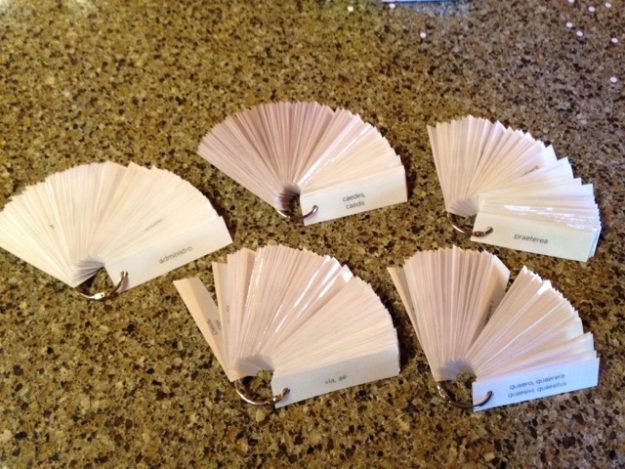
By the way, Henle 1 does not introduce these words in the order of the alphabet. Do you see the problem here?!? After spending a couple of hours laminating and punching holes, we started our attempt to organize them. Only problem is that Stephen wasn’t sure which vocabulary he’d already covered in Henle 1. Oh, man, oh, man, oh, man. Long story short, we took his neatly organized, homemade index cards out of the file box, punched holes in those, and hung them on rings organized by part of speech. {Does anyone else out there waste time making things more complicated than they need to be? No? Just me? Sigh.}
Update: We have a much better system now for vocabulary review and practice. Check it out here!
What’s up with Literature
Okay, so here’s where I feel like I have a better handle on things. Read aloud and morning time! Here’s what’s happening there.
What we read aloud and what we thought
Angel on the Square. Fantastic read aloud we finished in January while sitting in the car outside the dentist office! Set in Russia just before World War I, Angel on the Square follows the life of a wealthy girl who serves the imperial family (Nicholas II of Russia…) After World War I ends and the Bolshevik revolution turns her world upside down, she learns how to sacrifice as she rebuilds her life as a peasant. A glimpse of a piece of history I knew little about, this one is now on our family favorites list.
Sergeant York & the Great War– the story of Alvin C York, one of the most decorated soldiers of World War I. Written from primary source texts, (namely Alvin York’s journal (in his unique and original countrified Tennessee dialect), interviews, and other related sources), this biographical account has also become a family favorite! York’s diary entries tell a story of a sinner saved by grace – a man who objected to war due to religious convictions but later decided to serve as a means of bringing peace to the conflict. His inspiring life is an example of redemption, faith, diligence, humility, bravery, and service. And… you can read his story by downloading a free pdf (or kindle or web version) of Sergeant York: His Own Life Story And War Diary by Alvin York and Tom Skeyhill.
Breaking Stalin’s Nose. This was a quick, interesting read with a look into what life might have been like to live as a child in communist Russia. This book is not a family favorite, although it provides a valuable perspective of life under communist rule. Our boys didn’t like the ending at all and felt it was a “broken” story, although we are left with a glimmer of hope at the end. Includes illustrations.
I am David. After twelve-year-old David escapes from a prison camp in Eastern Europe, he struggles to survive in a world he knows very little about as he attempts to make his way north to seek refuge in Denmark. We found the setting of this book a bit confusing. We originally assumed that the book was set in WWII and that the vague “they” referenced in David’s thoughts were the Germans. However, we didn’t quite understand why David would escape south to the Mediterranean in order to go north to Denmark. Despite our confusion about the setting, the boys really liked this book. Plus, it was a great way to practice geography as we logically thought about David’s path north to freedom. Our son David liked this story so much that he presented on it this week in class.
What we are now reading
Shadow on the Mountain. Last year, we so enjoyed Preus’s book, Heart of a Samurai, that we decided to read this fictional novel based on the true adventures of a wartime spy in Norway. We’re about 50 pages into the book, and thus far we enjoyed the beginning of Snow Treasure more. But… we’ll see how it ends up! Another update: We think Snow Treasure is a much better book.
What we’re reading next
Our reading is going more quickly than expected, so we’ve continued to make some adjustments. Here’s what’s left of our read alouds for the remainder of this school year:




- When Hitler Stole Pink Rabbit. A real-life story about a Jewish family during World War II.
- Goodbye, Vietnam. Stories about the Vietnam War are difficult (as are most stories about war conflict). Because of its tie-in to Vietnam after the Vietnam War, we chose this story of a family’s escape as refugees in post-war Vietnam. (Gloria Whelan is also the author of Angel on the Square.)
- Children of the Storm. An autobiography of a Christian in a communist Soviet state. It seems that Angel on the Square stirred many thoughts and questions about communism, which is why we added this book and Breaking Stalin’s Nose to the mix.
- The Wheel on the School. This does not tie in to any of our history memory work, but our 12-year-old son told me we must read this book out loud as a family. Because it at least ties in to some of our geography memory work earlier in the year, and because it is a funny and enjoyable book, we decided we’ll close out our school year with this one.
- For picture books, visit this post.
What’s up with Morning Time and other activities
Before I mention these things, I just want to underscore the fact that we don’t do it all. The only thing we do consistently on a daily basis is reading, writing, and arithmetic. At least 2 days per week we review memory work (which oftentimes is just singing songs in the car). So… when I give a snippet of six weeks of goings-on around here, we might have just spent an hour one afternoon doing something that’s listed below. We just do little extra things that bring joy and excitement into our homeschool days. Click here to take a look at our schedule.
We recently updated the art gallery to include some of our new art projects. While going back through some old posts, I found a photo of the art gallery when we hung up our first masterpieces…
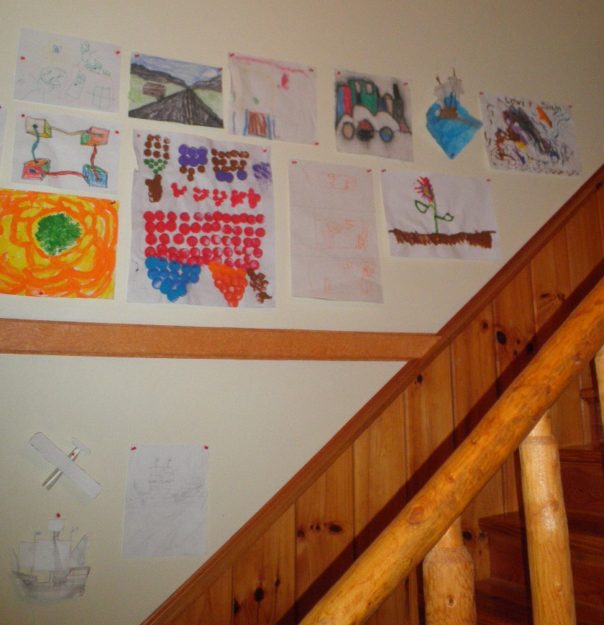
Here’s what it looks like today:
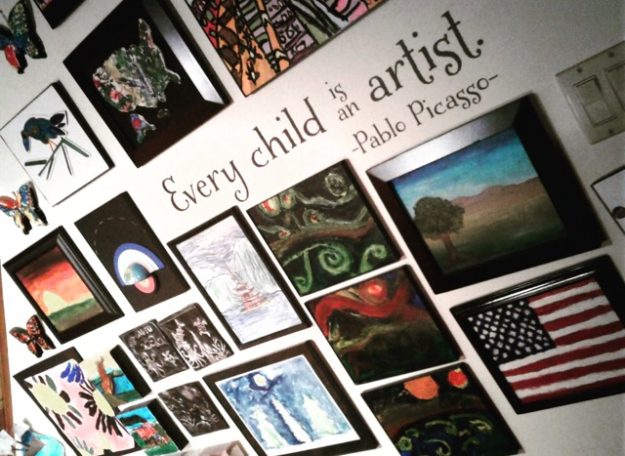
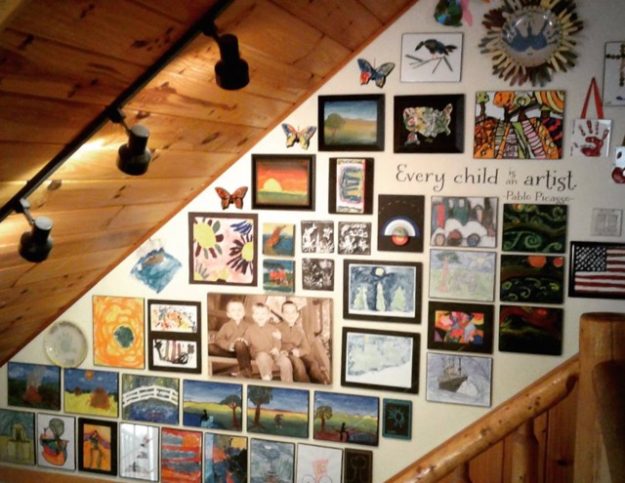
This is just one example of a great big thing coming from an itty bitty beginning. (What a great reminder to us all!)
We memorized Shakespeare Passage #1 from How to Teach Your Children Shakespeare. We’re a little bit slow with this, but we’re attempting to memorize a passage every six to eight weeks. Love this book, but you can stream audios of the passages here.
Calendar Quest & Western Civ Study. We’ve chipped away at this from time to time, and I’m totally serious that the boys LOVE Calendar Quest. It’s just that sometimes even the good stuff is too much in our normal everyday lives. We plan to focus on this a bit more during our break weeks this semester because the boys keep asking about it.
Mapwork. We continue to work on our weekly geography memory work and our tracing/blob mapping exercises throughout the week. How fun to see our 8th grader practicing geography once again as he joined his younger brothers in pinning labels on Europe! It still amazes me how much is stored in our oldest son’s brain when it comes to geography. Seventh grade was not a memorize-and-forget-it experience. It’s really in there!
We’re starting to use Kristen Draeger’s Draw the World books more now as our second son approaches middle school. Definitely using Draw the USA next year!
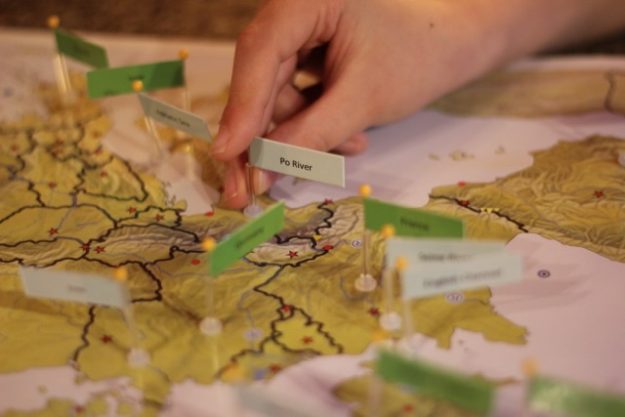
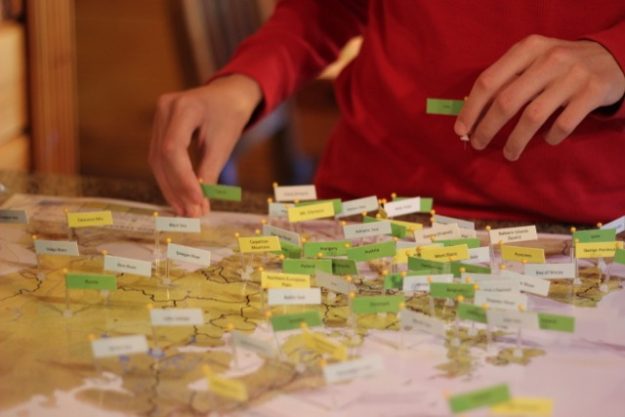
A Child’s Introduction to the Orchestra : Listen While You Learn About the Instruments, the Music and the Composers Who Wrote the Music! This book (which comes with audio downloads) is my absolute favorite for teaching orchestra and composers. My most recent amusement has been waking the boys up with Wagner’s Ride of the Valkyries. Just so *hilarious* to see them brushing their teeth with such intensity! Who knew classical music could be so much fun?
Not only that, but our youngest enjoys enthusiastically conducting our classical music sessions.
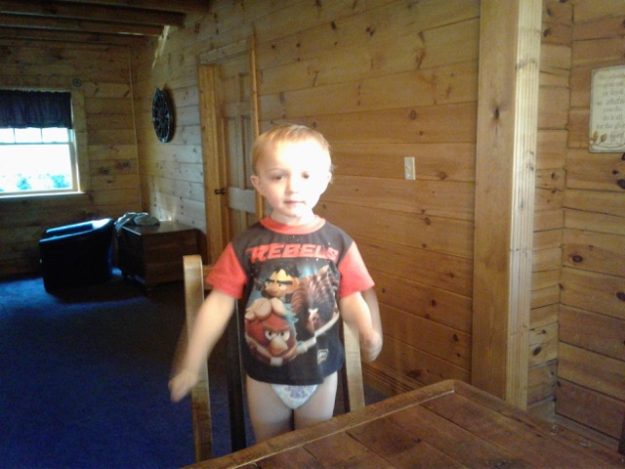
Science in the Ancient World. After attempting the Answers in Genesis God’s Design books, the boys have asked to return to Science in the Ancient World. Let me just say that both of these books – the Jay Wiles books AND the AiG God’s Design books, have been great resources middle school science research (the AiG books have been great for both Challenge A and B). So… if you have any of these, just hang on to them. They’re great references!
Artist Lap-Pak. Levi wanted to spend some extra time with art this semester, so we’ve been working on the Homeschool in the Woods Artist Lap-Pak. We’ll share more about that a bit later this semester… [Update: here’s the link to our experience with the Artist Lap-Pak!]
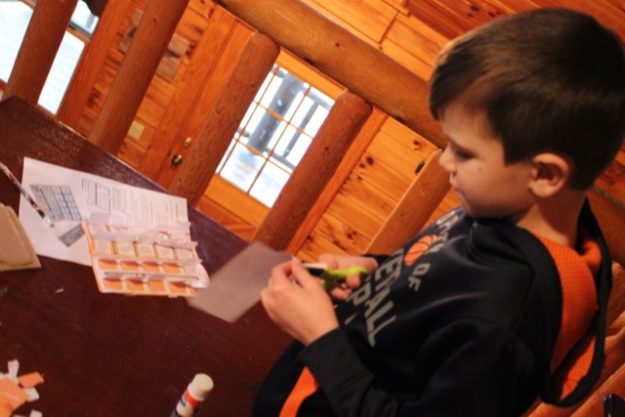
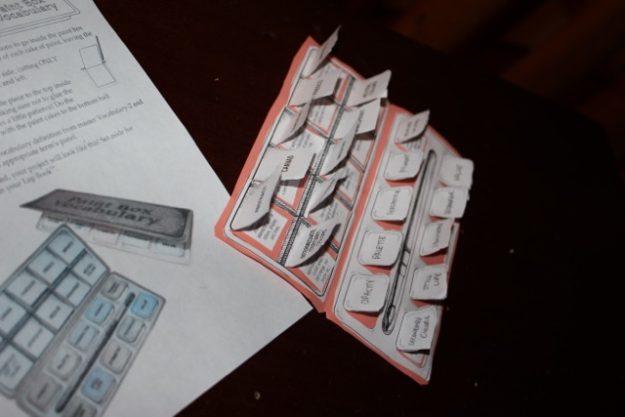
Timeline Project. Oh, how we love timeline notebooks around here! It’s just such a great way to gain understanding of events across the world and across time. Recently we’ve been using the Record of Time by Homeschool in the Woods. Click here for more details about this resource – we LOVE it!!!
It’s been a great way for our middle schooler to review and study history, since history is not a focus of Challenge A or Challenge B. He has REALLY missed history studies, so he spent one evening working on the Record of Time notebook for a few hours (of his own accord). He so enjoyed picking out all the scientists and events surrounding the Scopes Trial. I finally had to make him go to bed.
Family Field Trips
Our homeschool group took a trip to Cumberland Caverns at the beginning of January. One of the dads in our group was a former tour guide for Cumberland Caverns, so he was able to give us a special tour. This cave is so fascinating! (And we’ve been to a bunch of caves!)
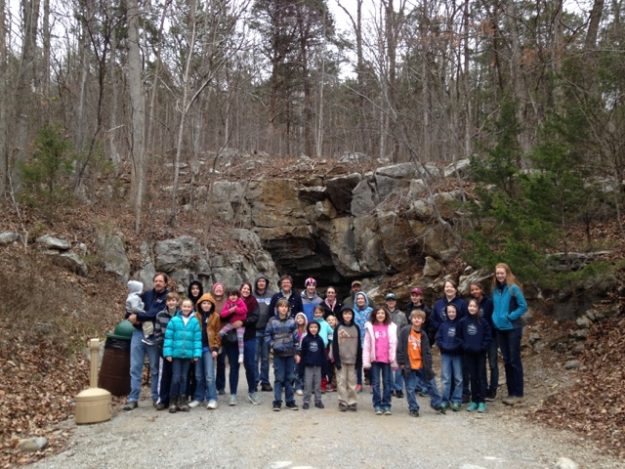
We were walking along the paths when suddenly the cavern opened up into a large room, complete with a chandelier and eating area. This is the site of the famous Bluegrass Underground. It’s also where we ate lunch. (Can you believe we ate lunch in a cave?) You can also camp out in this cave, so I’m hoping we get a chance to do that in the future. Fun, fun, fun!
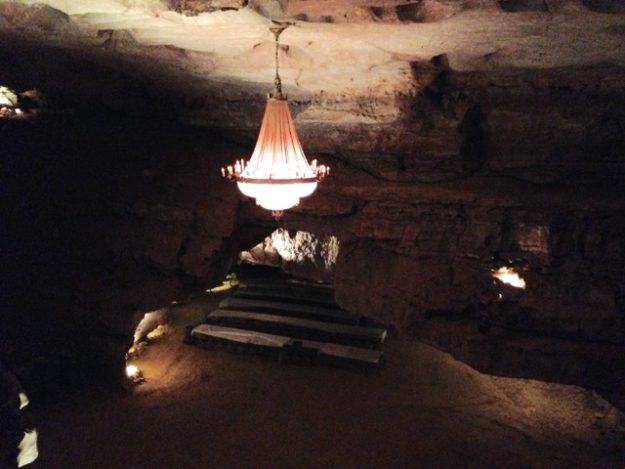
At the farthest-most point of our tour we watched a light show which was creation-based. I believe they don’t advertise that show anymore, although you can request it.
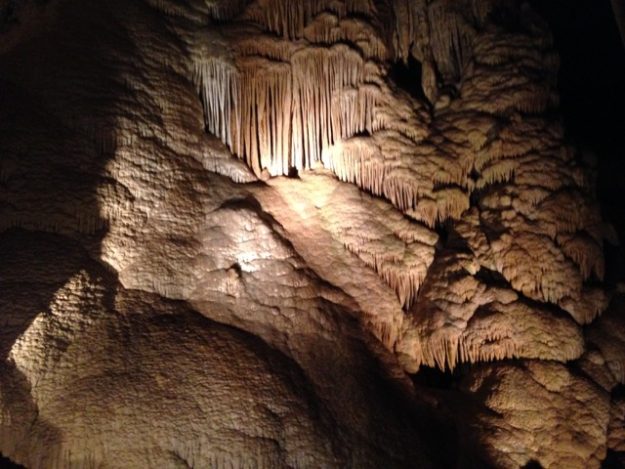
We also took a trip to Alvin C York State Historic Park. The students thoroughly enjoyed the swinging bridge, the grist mill, and the World War I trenches. Well worth the trip! In fact, we’re looking forward to going back here later this year. They have some events planned since this year marks the 100-year anniversary of the U.S. entering WWI.
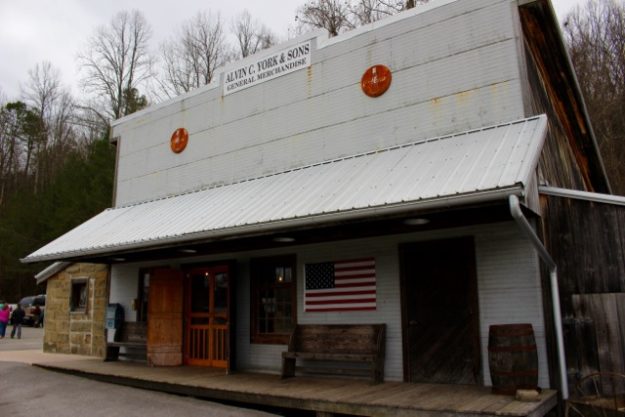
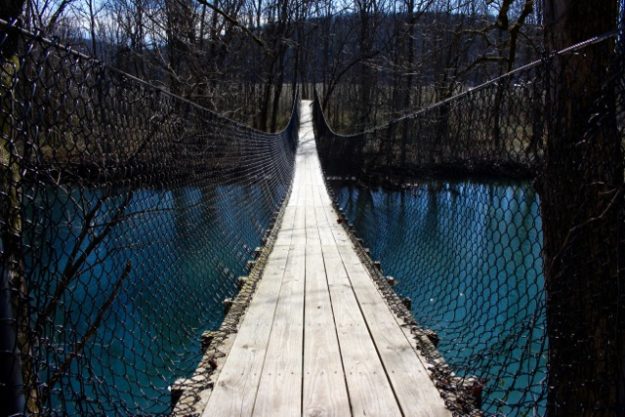
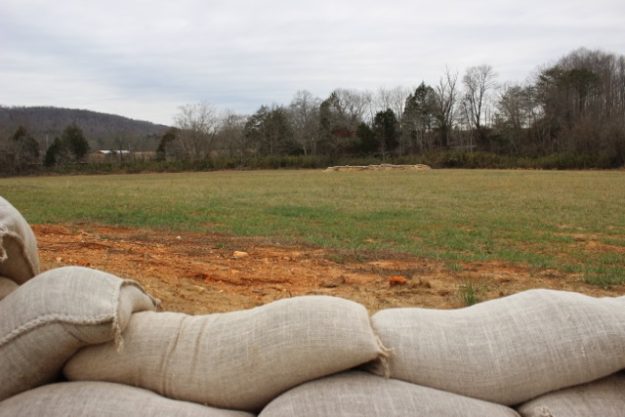
About 25 minutes from Alvin C York State Park lies Cordell Hull Birthplace State Park. Cordell Hull was considered the “Father of the United Nations.” (He was also father of the federal income tax, ahem.) I plan to write up more about that trip soon.
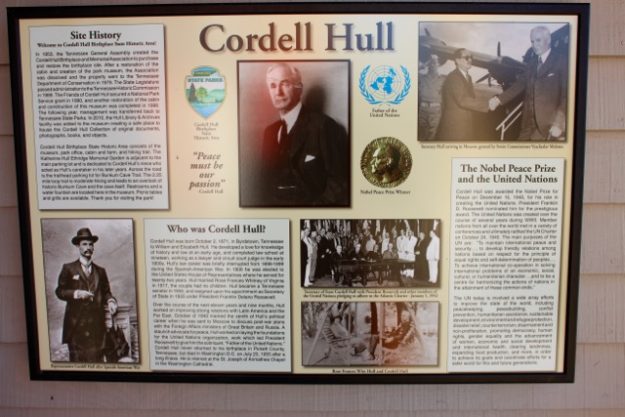
So that’s the first six weeks of our spring semester in a nutshell! What have you been up to?

